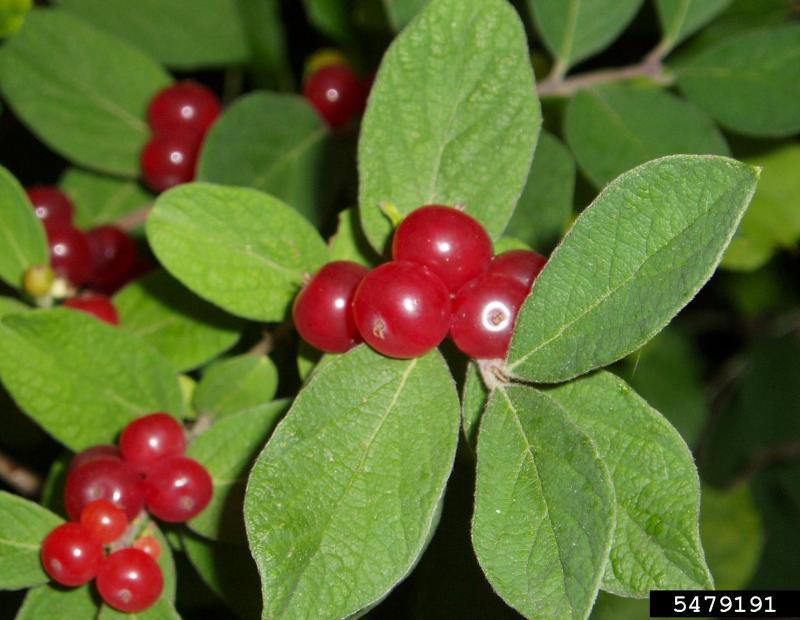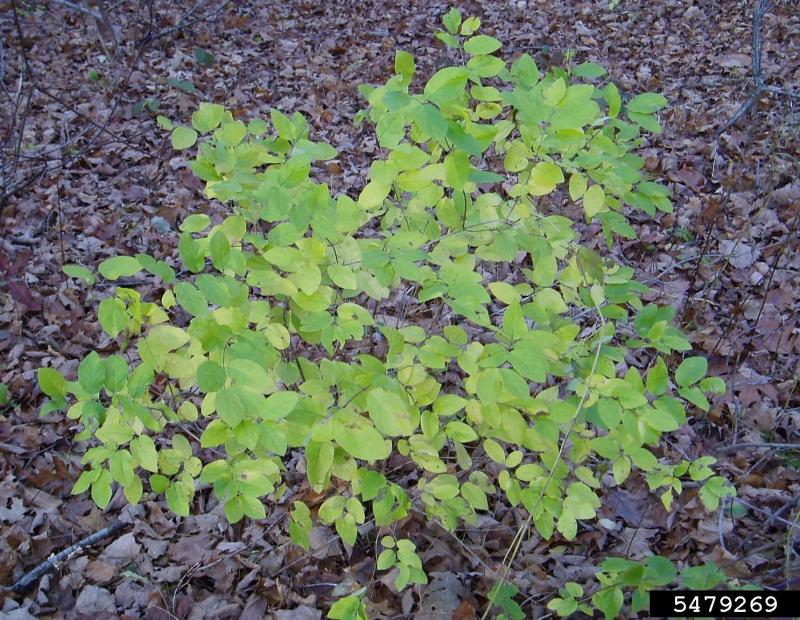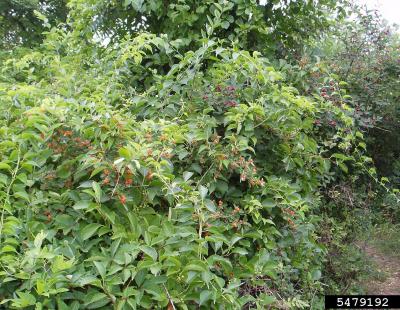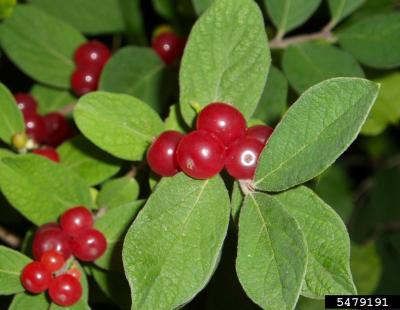- Terrestrial Plants
- Shrub or woody bush
Lonicera morrowii can grow in dense thickets that prevent other native plants from establishing themselves. It invades not well established areas, and prevents successional stages to occurr. It can hypridize with native L. tatarica to produce hybrid L. x bella, which is also extremely invasive. It is often quickly spread by birds that favor their fruits that ripen in mid-summer.
Lonicera morrowii is native to Japan. In the United States, there have been reports of it from the east coast, south to South Carolina, and West to Minnesota, Iowa, Missouri, and Arkansas as well as Wyoming, Colorado and New Mexico. These plants were discovered in Japan in 1862 and were sent to Cambridge, Massachusettes, where shortly after, these plants were introduced into cultivation. It is figured to have become established in New England through plantings.
This honeysuckle is a woody, perennial shrub that grows up to 8 ft. tall. The stems of this shrub are hollow. Oppositely arranged leaves are oblong to narrowly elliptic in shape, and measure 1-2.5 inches long. The apexes of the leaves tend to be obtuse, but can occasionally be acute. The leaves of the plant are grayish and tomentose on their lower surface. They have paired flowers, measuring about .5 inch long and are usually white, that fade to yellow with age. These flowers bloom from late May through June. The fruits are red round berries and are also bourne in pairs. These berries persist from mid-summer through mid-fall.
Morrow's honeysuckle can be found in a wide variety of habitats, including abandoned fields, early successional forest, edges, floodplain forests, open disturbed areas, pastures, planted forests, roadsides, utility-right-of-ways, vacant lots, yards or gardens. It thrives best in mesic soils, but can also grow well in dry, sandy soils in calcareous regions. Morrow's honeysuckle is widespread throughout the Lower Hudson region.









